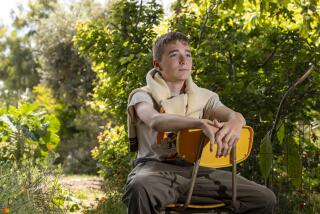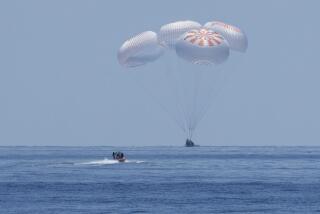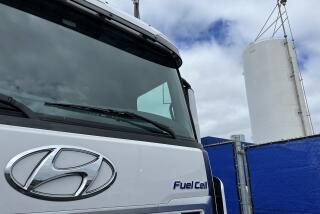San Diego Picked as Possible Site of Fusion Project : Energy: City wins backing to host joint effort by several nations to develop plans for nuclear fusion reactor.
San Diego has been proposed as a site for an international engineering effort by dozens of top scientists and engineers who will work together to develop plans for a nuclear reactor capable of creating fusion energy.
The selection of San Diego over three other U.S. cities was announced Monday at a press conference held by UC San Diego and U.S. Department of Energy officials.
San Diego was promoted as a site by UCSD officials, who were attracted by the prestige that the project would bring to the campus and other UC schools and laboratories, which are expected to play a role in the research and development.
Officials from the four partners in the project, known as the International Thermonuclear Experimental Reactor, or ITER, are expected to pick a site for the engineering and design effort perhaps as early as next month, said Albert Opdenaker, of the DOE Office of Fusion Energy. It was DOE officials who settled on San Diego last week, Opdenaker said.
San Diego is competing with Japan and the European Community, which have recommended sites near Tokyo and Munich, Germany. The four partners in the ITER project are the United States, Soviet Union, European Community and Japan.
Sustained fusion has been a long and elusive dream for nuclear physicists. ITER researchers hope to create magnetic fusion in a large doughnut-shaped device called a tokamak, where an extremely hot gas, or plasma, is confined. The tokamak has several O-shaped magnets ringing it at spaced intervals.
The goal is to trap fast-moving particles inside the tokamak long enough to enable them to fuse together and sustain a fusion reaction, producing energy faster than it is lost.
UCSD Dean of Engineering M. Lea Rudee said fusion has several important advantages over fission energy, which is produced by nuclear reactors now used worldwide. Fusion is âcleanâ energy, producing minimal nuclear waste and resulting in less damage to the environment, said Rudee.
Being picked as the engineering and design site has another important advantage. Rudee estimated the project will take five to six years and cost about $1 billion. About 300 scientists, engineers and support staff are expected to participate.
The goal is to come up with plans and blueprints for the fusion reactor. At the end of the engineering, research and development efforts, the four partners will pick a site for the reactor.
âThe selection of the site will be a political issue,â said David Overskei, vice president of General Atomics.
General Atomics, which is expected to play a role in the project, has experimented with fusion for several years. Other local companies, including General Dynamics, which is a leading researcher in magnets, are expected to participate.
Officials stressed that only about 50% of the engineering and design work will take place at the selected site. The rest will occur in laboratories and industrial firms situated in countries used by the four partners.
More to Read
Sign up for Essential California
The most important California stories and recommendations in your inbox every morning.
You may occasionally receive promotional content from the Los Angeles Times.










